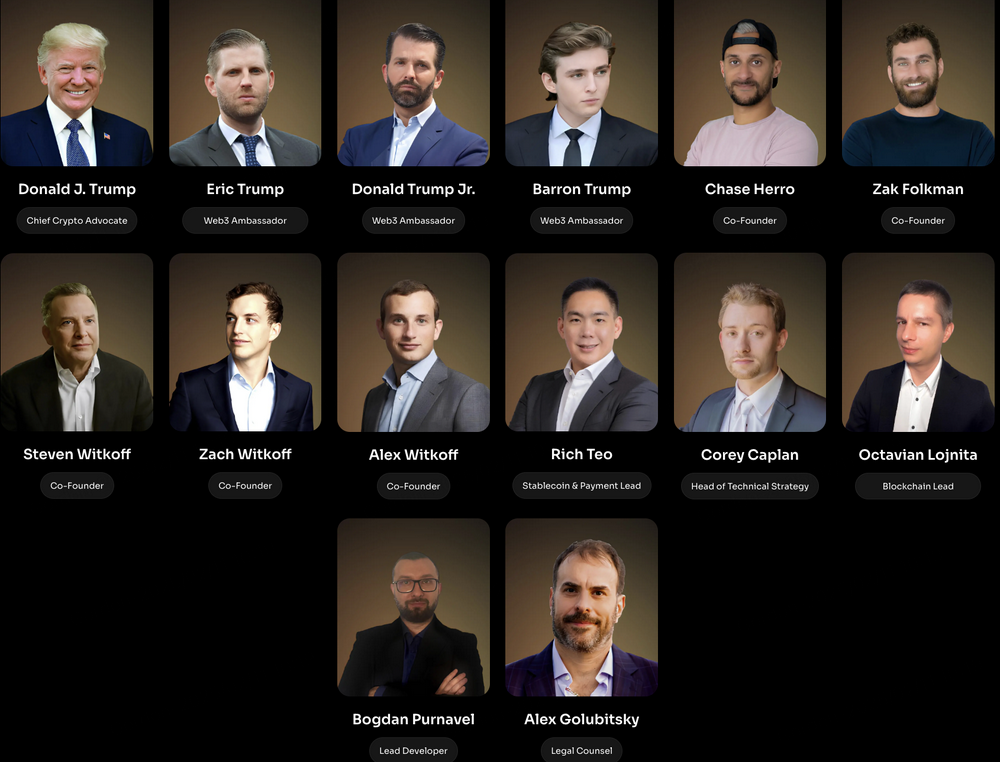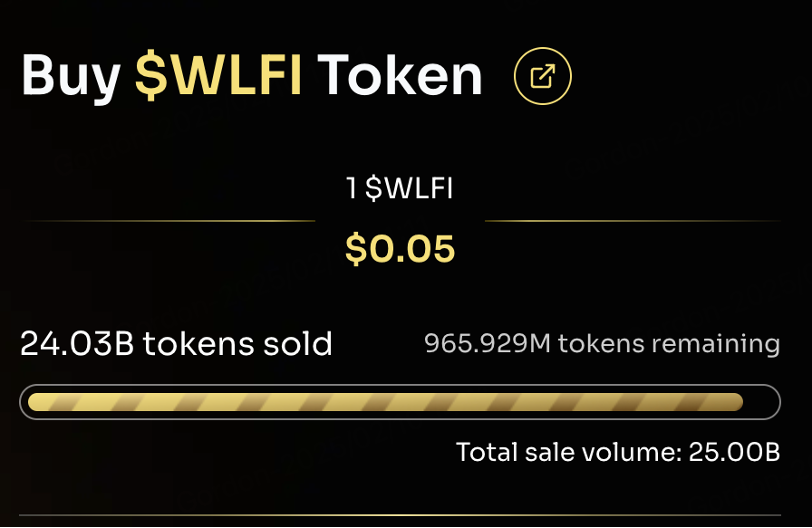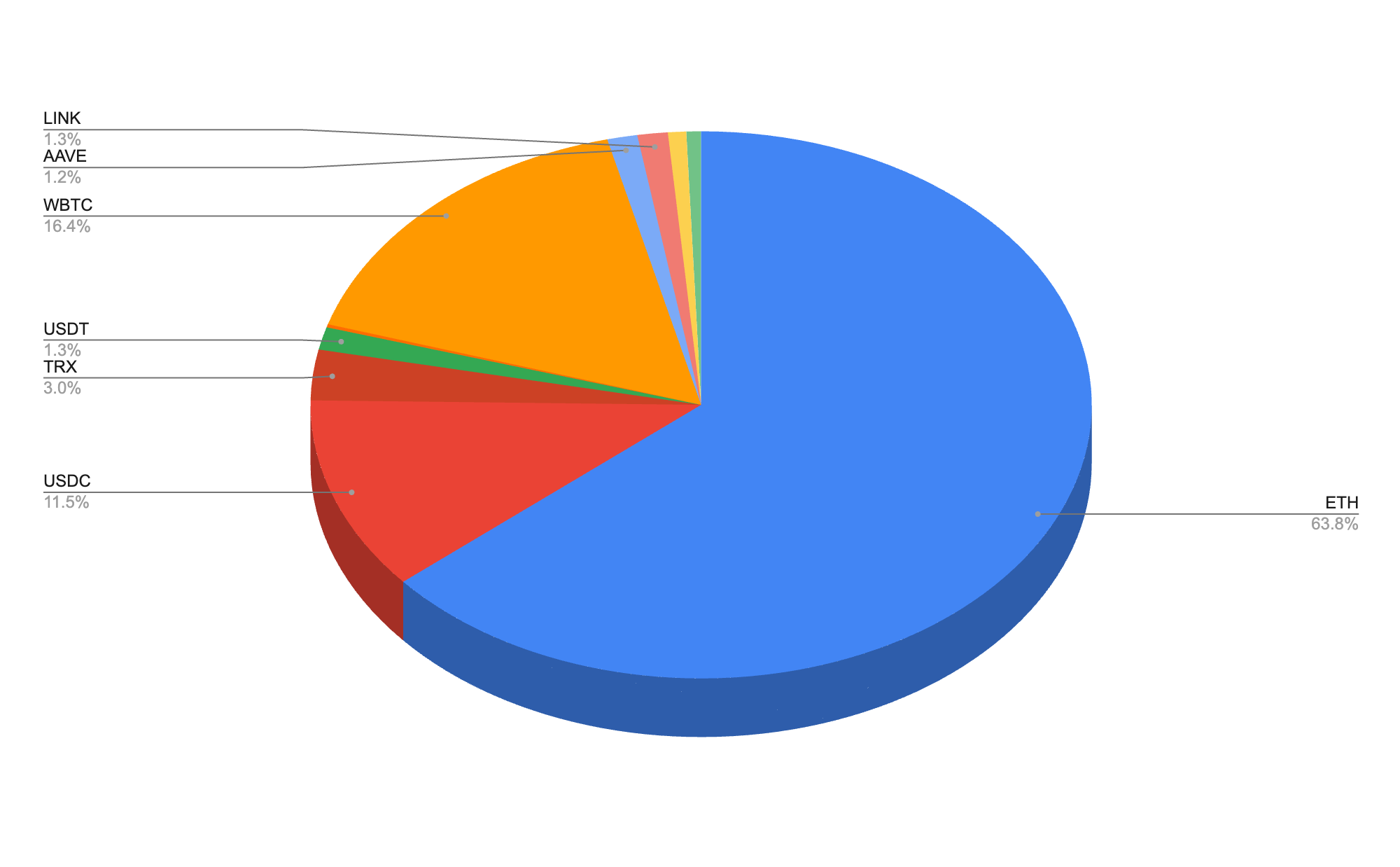1. Project Background
1. Project Introduction
WLFI is a DeFi project supported by the family of US President Trump, which was officially launched in September 2024. Its core goal is to promote the widespread use of stablecoins, strengthen the dominant position of the US dollar in the global financial system, and use cryptocurrency technology to implement the vision of "making America great again". WLFI is positioned as a DeFi lending platform. It runs on the Ethereum network in the early stage and uses mature DeFi protocols (such as Aave v3) to optimize the user experience rather than launching new financial instruments.
On December 13, 2024, the World Liberty Financial community passed the first proposal and successfully deployed an Aave v3 instance. Although WLFI has made initial progress, most of the co-founders of the project team are new faces, and its long-term feasibility and innovation potential remain to be verified.
On February 12, 2025, WLFI announced the launch of the "Macro Strategy", which aims to establish a strategic token reserve to support leading cryptocurrency projects such as Bitcoin and Ethereum. The strategy will help WLFI enhance stability, promote growth and build trust, while working with traditional financial institutions to promote asset tokenization. WLFI is working with a number of financial institutions to include their tokenized assets in reserves and provide transparency through public blockchain wallets. In addition, WLFI will work with partner institutions to carry out marketing and brand promotion activities to demonstrate its leadership in financial innovation.
2. Team Information
Trump family roles
Donald J. Trump: Listed as the “chief cryptocurrency advocate,” responsible for speaking out for the project but not deeply involved in its technology or operations.
Eric Trump & Donald Trump Jr. & Barron Trump: Served as "Web3 Ambassadors", mainly responsible for the promotion and publicity of the project.
Core Co-Founder
Chase Herro and Zak Folkman: They jointly lead the operation, but their backgrounds are controversial due to their lack of experience in the crypto industry. Chase Herro was involved in marijuana sales and promotion of controversial tokens; Zak Folkman founded a dating teaching company for men.
Witkoff family: Real estate developer Steven Witkoff and his sons Zach and Alex have close ties with the Trump family. Steven donated $2 million to Trump's campaign. After Trump won the election, he appointed him as a special envoy to the Middle East.
Core technical personnel
Rich Teo: Head of Stablecoins and Payments, previously founded the exchange itBit and the stablecoin company Paxos, and currently serves as CEO of Paxos Asia. In addition, Rich is also an advisor to SocialFi's project RepubliK.
Corey Caplan: Head of technical strategy, co-founder of DeFi platform Dolomite, responsible for integrating lending and trading functions.
Bogdan Purnavel: Lead developer, formerly developer of Dough Finance.
Advisory Team
Alexei Dulub: Founder of Web3 Antivirus, blockchain security expert, involved in L1/L2 development since 2013.
Sandy Peng: Co-founder of Ethereum's second-layer network Scroll, providing technical support for capacity expansion.
Justin Sun: As a strategic advisor and the largest investor (investing $75 million), he promoted ecological cooperation with TRON.

Information source: WLFI official website
2. Source of Funds and Token Purpose
WLFI's funding comes from WLFI token fundraising, and as of February 9, a total of $455 million has been raised (data source: WLFI official website ). Among them, the 21.3 billion tokens in the first round of public sales were sold out at a unit price of $0.015, and the total funds raised were $319 million. The second round of public sales project raised the unit price to $0.05, and a total of $136 million was raised as of February 9. At present, the total value of crypto assets purchased by WLFI is roughly estimated to be about $325.8 million, including important projects such as ETH, WBTC, DeFi, and RWA. But one thing to note is that the operation of this project is not to issue WLFI tokens in a fund-like manner to raise funds, but to purchase tokens of mainstream projects with growth potential, and WLFI token holders share the share of the asset portfolio appreciation. The project white paper clearly states that the WLFI purchased by users is only a governance token and has no right to distribute investment and other returns. Although WLFI defines itself as a DeFi lending platform, it has not yet started operations or provided DeFi services, so the WLFI token currently has no value or use.

3. Total Positions
As of February 2025, the total asset value of WLFI is roughly estimated to be approximately US$327 million, the on-chain asset value is approximately US$37.79 million, and the centralized exchange asset value (if not sold) is approximately US$289 million (deposited in Coinbase Prime as part of fund management and business operations).
WLFI on-chain assets (data source: ARKM )
No | Asset | Holding | Price(USD) | Value(USD) |
1 | USDC | 9,683,000 | 1 | 9,683,000 |
2 | TRX | 40,718,000 | 0.24 | 9,772,320 |
3 | STETH | 2,743 | 2,664 | 7,172,127 |
4 | USDT | 4,373,000 | 1 | 4,373,000 |
5 | ETH | 2,084 | 2,663 | 5,451,704 |
6 | ONDO | 342,002 | 1.34 | 458,283 |
7 | MOVE | 1,634,000 | 0.54 | 882,360 |
TOTAL | 37,792,794 |
WLFI Coinbase Prime assets (data source: SpotonChain )
No | Asset | Amount To Coinbase Prime | Price (USD) | Value (USD) |
1 | ETH | 73,783 | 2,663 | 196,484,129 |
2 | WBTC | 553 | 97,027 | 53,648,169 |
3 | AAVE | 16,585 | 246.7 | 4,091,520 |
4 | LINK | 219,149 | 18.79 | 4,117,810 |
5 | ENA | 4,941,034 | 0.5 | 2,470,517 |
6 | MOVE | 2,050,010 | 0.54 | 1,107,005 |
7 | ONDO | 114,754 | 1.34 | 153,770 |
8 | USDC | 27,859,000 | 1 | 27,859,000 |
TOTAL | 289,931,920 |
4. Position Structure Analysis
As a crypto project strongly associated with the Trump family, WLFI's asset allocation strategy has attracted the attention of the market and derived the concept of President's Choice. As of February 2025, ETH occupies a core position in WLFI's crypto holdings (accounting for 63.8%), followed by WBTC (accounting for 16.4%), and the remaining funds are deployed in DeFi and RWA tracks. It is worth noting that although the ETH/BTC exchange rate has continued to fall since December 2024, WLFI still chose to increase its ETH position against the trend, which highlights its bet on the value of the underlying infrastructure of the Ethereum ecosystem. In terms of segmented track selection, WLFI focuses on head projects: DeFi field configures oracle leader Chainlink (LINK) and lending protocol Aave (AAVE); RWA track is heavily invested in tokenized U.S. debt protocol Ondo Finance (ONDO) and synthetic dollar protocol Ethena (ENA), forming a combination of "old protocol + emerging protocol".
In terms of external cooperation, WLFI has formed a deep bond with TRON founder Justin Sun, who has invested a total of $75 million through HTX-related addresses, becoming the largest institutional investor. This also explains the logic of WLFI holding TRX and WBTC.
In terms of fund management, WLFI recently transferred $307.4 million of assets to Coinbase Prime custody and unpledged 19,400 stETH for liquidity management. The project currently still holds $47.49 million in stablecoin reserves, and future investments may focus on three major directions: 1) supplementing core asset holdings; 2) deploying emerging RWA protocols; and 3) paying for ecological cooperation fees.
1. Ethereum (ETH)
ETH: 78,610 ($209 million, 63.8%).
2. DeFi
AAVE: 16,585 (US$4.091 million, 1.2%)
LINK: 219,000 (US$4.117 million, 1.3%)
3.RWA
ENA: 4.941 million (US$2.47 million, 0.8%)
ONDO: 456,000 (US$612,000, accounting for 0.001%)
4. Sun Yuchen’s assets
WBTC: 553 (US$53.648 million, 16.4%)
TRX: 40.71 million (US$9.772 million, accounting for 3%)
5. Other assets
USDC: 37.54 million (US$37.54 million, 11.5%)
USDT: 4.37 million (US$4.14 million, 1.3%)
MOVE: 3.68 million (US$1.989 million, 0.3%)

5. Logical Analysis of the WLFI Project: Political Empowerment and Financial Ambition
1. Financialization of political resources: the Trump family’s fundraising tool
From the perspective of WLFI's token economic model, up to 75% of sales revenue directly belongs to the Trump family, while the project's legal structure deliberately avoids direct links with Trump himself, but publicly endorses it through family members (such as Eric Trump) to strengthen its political binding attributes. This design essentially transforms Trump's political influence into quantifiable financial assets, making it a political fundraising tool rather than a truly decentralized financial product. The market generally regards WLFI as "a bet on the prospects for Trump's crypto policy support." The previous behavior of investors buying the token is essentially equivalent to indirectly supporting Trump's campaign. This model is similar to Trump's previously launched Trump MEME token, both of which are alternative fundraising channels outside of traditional political donations.
2. Market sentiment manipulation: the dual operation of funds and narratives
Projects can use Trump's political influence to create market sentiment for themselves and related projects. For example, after receiving investment from Justin Sun, WLFI bought a large amount of TRX and WBTC, and its current holdings are worth about $63.41 million. As of February 9, Justin Sun has invested a total of $75 million, of which 84.5% of the funds are used to purchase its associated tokens. In addition, Chase Herro, co-founder of WLFI, recently stated that he plans to use the tokens purchased by WLFI to establish a "strategic reserve". Although he did not specify the goals and reasons for establishing a token reserve, this topic has been the focus of attention since Trump promised to establish a token reserve during his campaign last year. Last month, Trump signed an executive order to evaluate the feasibility of creating a digital asset reserve. In this context, WLFI's plan to establish a strategic reserve will undoubtedly strengthen the market's expectations for the concept of "President's Pick". By deeply binding with Trump's encryption policy, WLFI can not only create market expectations and attract more capital inflows, but may also facilitate off-site cooperation between project parties and political capital, thereby further expanding its market influence.














